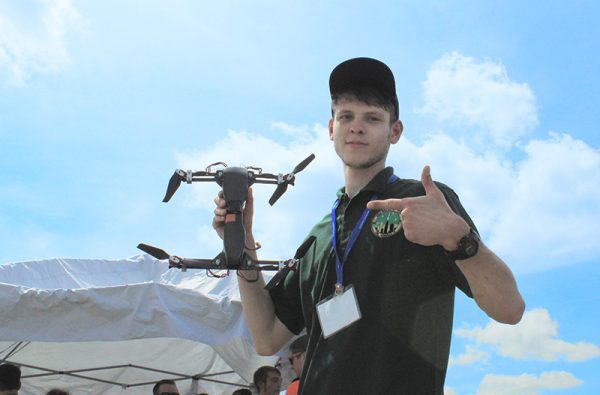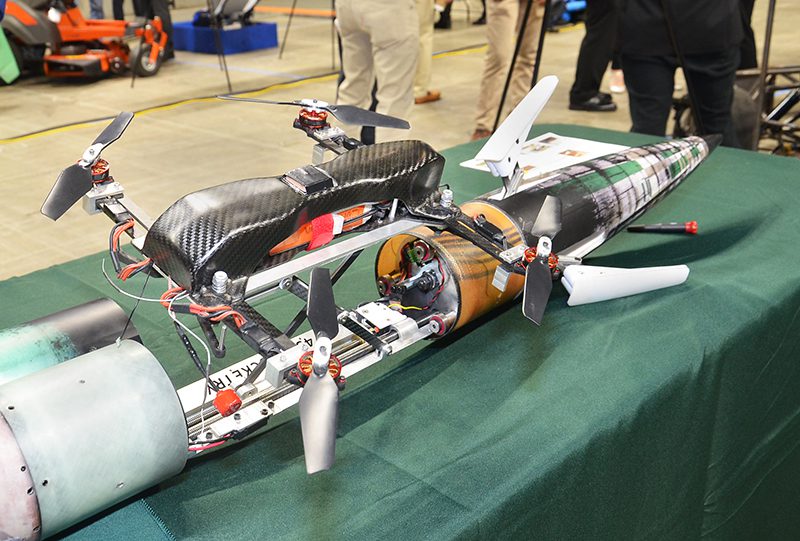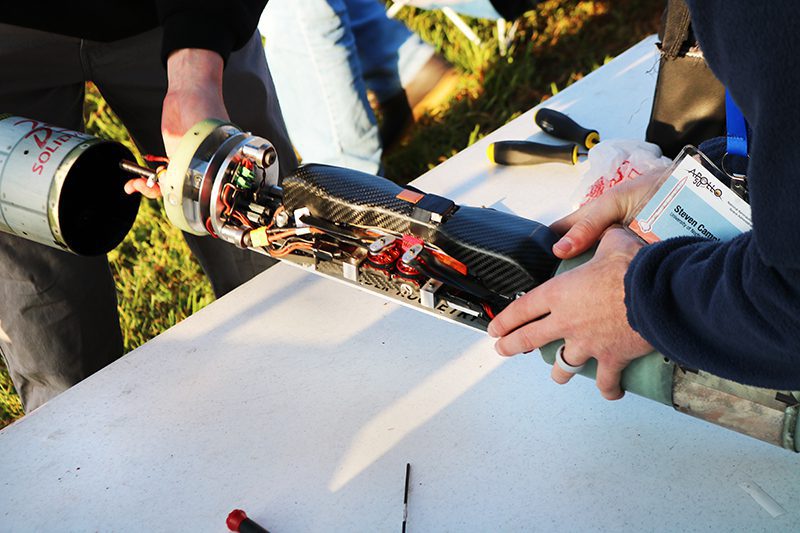Innovative Payload Leads 49er Rocketry Team

Innovative engineering in the construction, launching and operation of an autonomous drone led the 49er Rocketry Team to an extremely successful 2019 competition. The drone, or unmanned aerial vehicle (UAV), was the payload of the rocket, and judges ranked it as the top payload at the NASA Student Launch Initiative Competition held at Marshall Spaceflight Center in Huntsville, Alabama, on April 6th. The UNC Charlotte team finsihed second overall at the competition.
Forty-five teams from throughout the United States designed and built rocket systems for NASA’s annual high-powered rocketry competition. Requirements for the competition included launching a rocket to a predicted altitude, releasing a payload compartment, landing the payload with parachutes, deploying a drone from the payload compartment, and flying the drone to a designated spot and dropping a simulated navigational beacon.

“Our team’s payload was quite innovative, because of several design choices,” said Dr. Jerry Dahlberg, the team’s mentor and an associate professor in The Williams States Lee College of Engineering. “The first innovation was the team stabilized the payload on the ground, and then elevated it above any obstructions. The team also choose to build a large quad copter (UAV) capable of carrying a lot of electronics. This meant the 14-inch-by-14-inch copter had to be able to fold down to four inches by 10 inches, so it would fit inside the rocket.”
Mechanical Engineering student William Blalock was the payload leader for the 49er Rocketry Team. “Our payload was a foldable autonomous deployable unmanned aerial vehicle (UAV),” he said. “We used folding arms and propellers to maximize volume within the rocket. Deployment consisted of separating the payload airframe and nose cone to expose the UAV, stabilizing the payload section to prevent rolling, orienting the UAV upright, lifting the UAV above the airframe to prevent interference, and unfolding and locking the UAV arms into place.”
The UAV carried a number of components so it could autonomously take off, search, locate and travel to the NASA-specified excursion area and deliver its navigational beacon. These components included a flight controller, four motors and electronic speed controllers, a Raspberry Pi Zero W, a GPS module, an ultrasonic sensor, a small servo motor, a light imaging detection and ranging sensor, a flight receiver, a telemetry transmitter, a first-person view camera and transmitter, a computer camera system, a power limit switch and a battery.

In the preliminary results for the NASA competition, the 49er team was recognized with:
1st Place – Safety Award
1st Place – Payload Design
2nd Place – Project Review
3rd Place – STEM Engagement
3rd Place – Best Looking Rocket2nd Place – Overall
The 49er Rocketry Team members were:
Kyle Kalish
Charles Ogino
Kyrah Ford
Steven Campbell
Cameron Palkowski
Mitchell Collins
David Cardenas
Dmitri Gutuleac
Robert Cook
Richard Bastian
Kohl Whitlow
William Blalock
William Timms
Daniel Cornett
Alexander DeChant
David Black
Darrin Leer
Jonas Bell